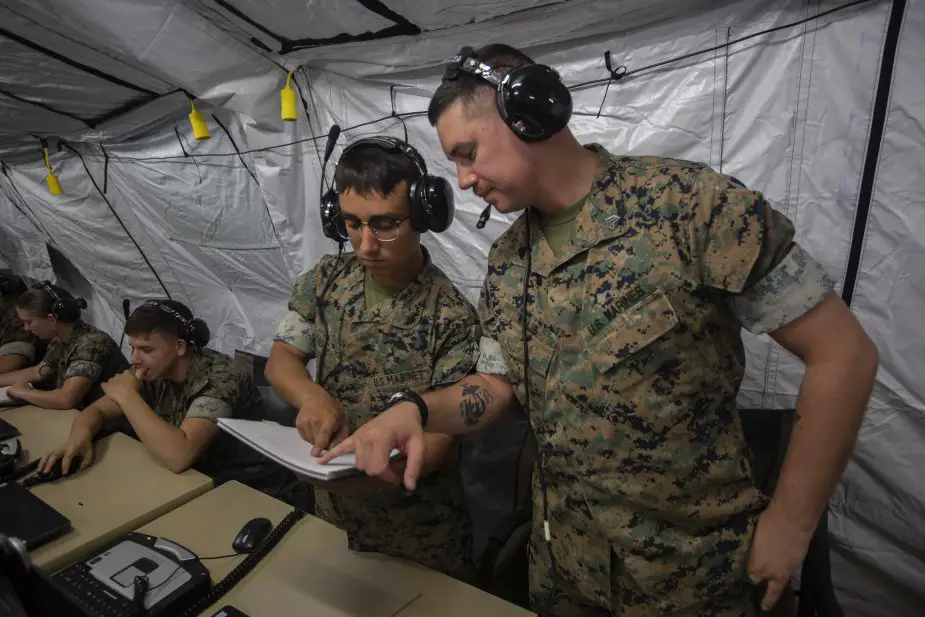Program Executive Officer Land Systems recently completed fielding all full-rate production units of the Common Aviation Command and Control System. The task was accomplished nearly two years ahead of schedule, saving the government millions of dollars in the process. Ashley Calingo, Marine Corps Base Quantico, reports.
Follow Army Recognition on Google News at this link

U.S. Marines conduct New Equipment Training with Phase II of the Common Aviation Command and Control System while aboard Marine Corps Air Station Futenma, Okinawa, Japan, Sept. 19, 2020 (Picture source: U.S. Marine Corps/ Lance Cpl. Ethan LeBlanc)
CAC2S modernizes the Marine Corps aviation command and control capability used by the Aviation Combat Element of the Marine Air-Ground Task Force, replacing dissimilar systems and providing Marines with the hardware, software and facilities necessary to effectively provide comprehensive air command, control and coordination.
The modular and scalable system reduces the physical size and logistical footprint of Marine Air Command and Control System equipment, significantly increasing both communication and battlefield mobility for Marines in theater. “CAC2S provides Marines with enhanced situational awareness and the ability to receive and disseminate information across the battlefield,” said Maj. John McCormack, CAC2S fielding team lead at PEO Land Systems. “It’s really important, especially with the new emerging concepts—particularly in supporting the [expeditionary advanced base operations].”
The program office fielded CAC2S in two phases. The initial phase, which concluded fielding in 2013, laid the groundwork for phase two by establishing initial product display system and communications system baselines. Phase two integrated technologies that enhanced the CAC2S sensor data system. The program office also reconfigured the system to fit onto a single Humvee, instead of the Humvee and trailer combination seen in the first phase. This phase concluded fielding in July. “[The deployment of phase two] increases the transportability, mobility and flexibility that are inherent to having the system on the back of a single vehicle,” said McCormack.
While phase one of CAC2S was a government-built capability, phase two was built by General Dynamics under a competitively-awarded production contract. Mark Lamczyk, deputy program manager for Aviation Command and Control and Sensor Netting at PEO Land Systems, credits the collaborative relationship between PEO Land Systems and the system’s manufacturer as a key factor in enabling the program to procure and deliver all CAC2S systems ahead of schedule. “For full deployment of the system, our acquisition decision memorandum objective [of 50 systems] was September 2021, and the threshold was March 2022,” said Lamczyk. “We concluded the final fielding of our full-rate production systems to one of our Marine Corps Reserve squadrons in July, achieving full deployment 14 months ahead of objective and 20 months ahead of threshold.”
Due to the highly technical and software-dependent nature of CAC2S, phases one and two initially had two distinct software builds, said Lamczyk. The program office was able to provide a common software baseline that allowed the contractor to reuse software from phase one in the phase two builds, enabling the government to save time and streamline costs.
“[The common software baseline] allowed us to take the software licenses that we bought for phase one and issue them back to General Dynamics as [government-furnished information],” said Lamczyk. “Their ability to reutilize the core software we developed and tested under phase one, and incorporate it into their builds for phase two, was where a lot of our cost savings and where some of our time recoupment was captured.”














